
How to Use laser module: Examples, Pinouts, and Specs
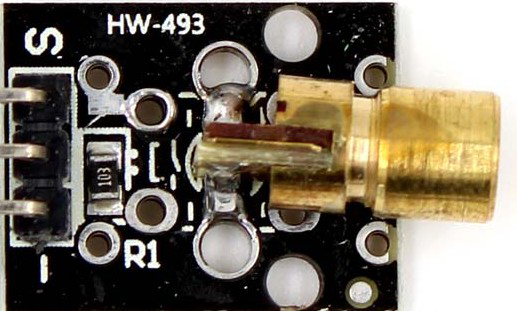
 Design with laser module in Cirkit Designer
Design with laser module in Cirkit DesignerIntroduction
A laser module is a device that emits a coherent beam of light through the process of stimulated emission. It typically consists of a laser diode, optics for beam shaping or focusing, and often a protective housing. Laser modules are widely used in applications such as optical communication, distance measurement, barcode scanning, material processing, and laser pointers. Their ability to produce highly focused and precise beams makes them indispensable in both industrial and consumer applications.
Explore Projects Built with laser module
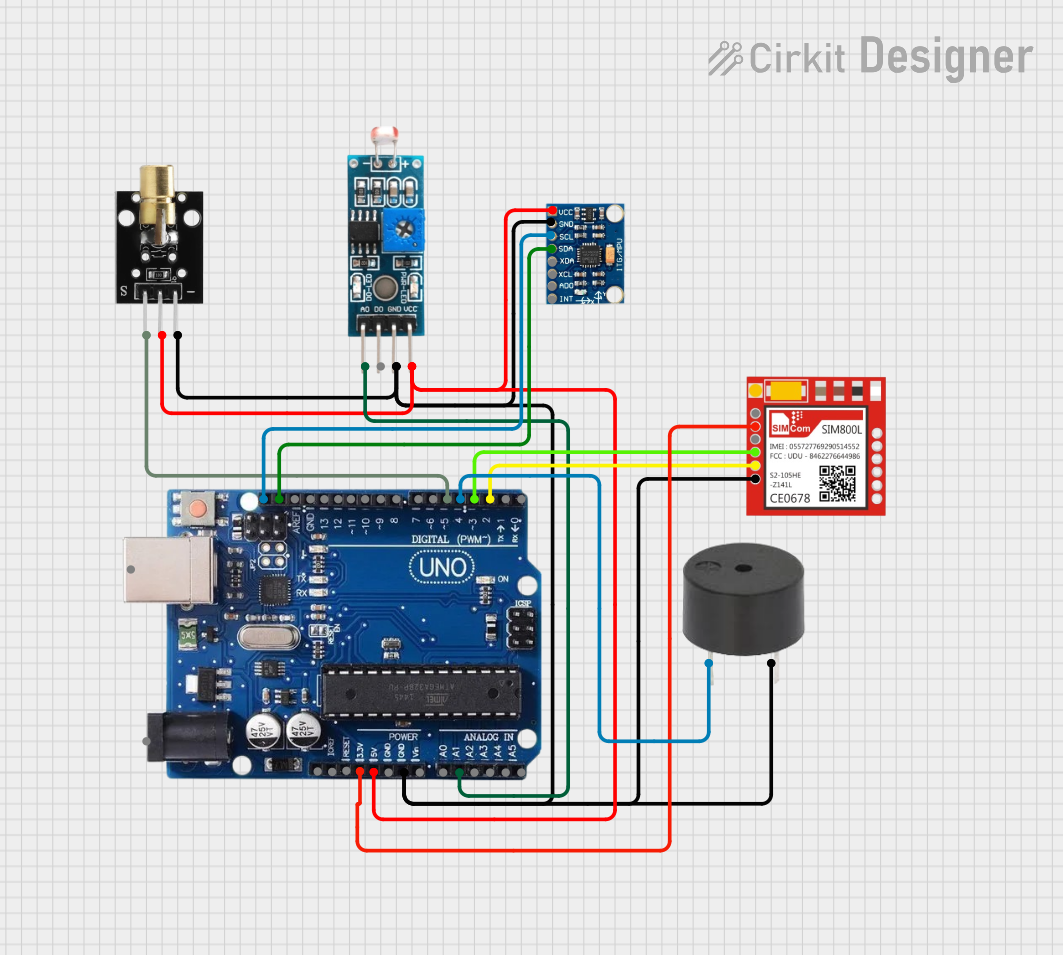
 Open Project in Cirkit Designer
Open Project in Cirkit Designer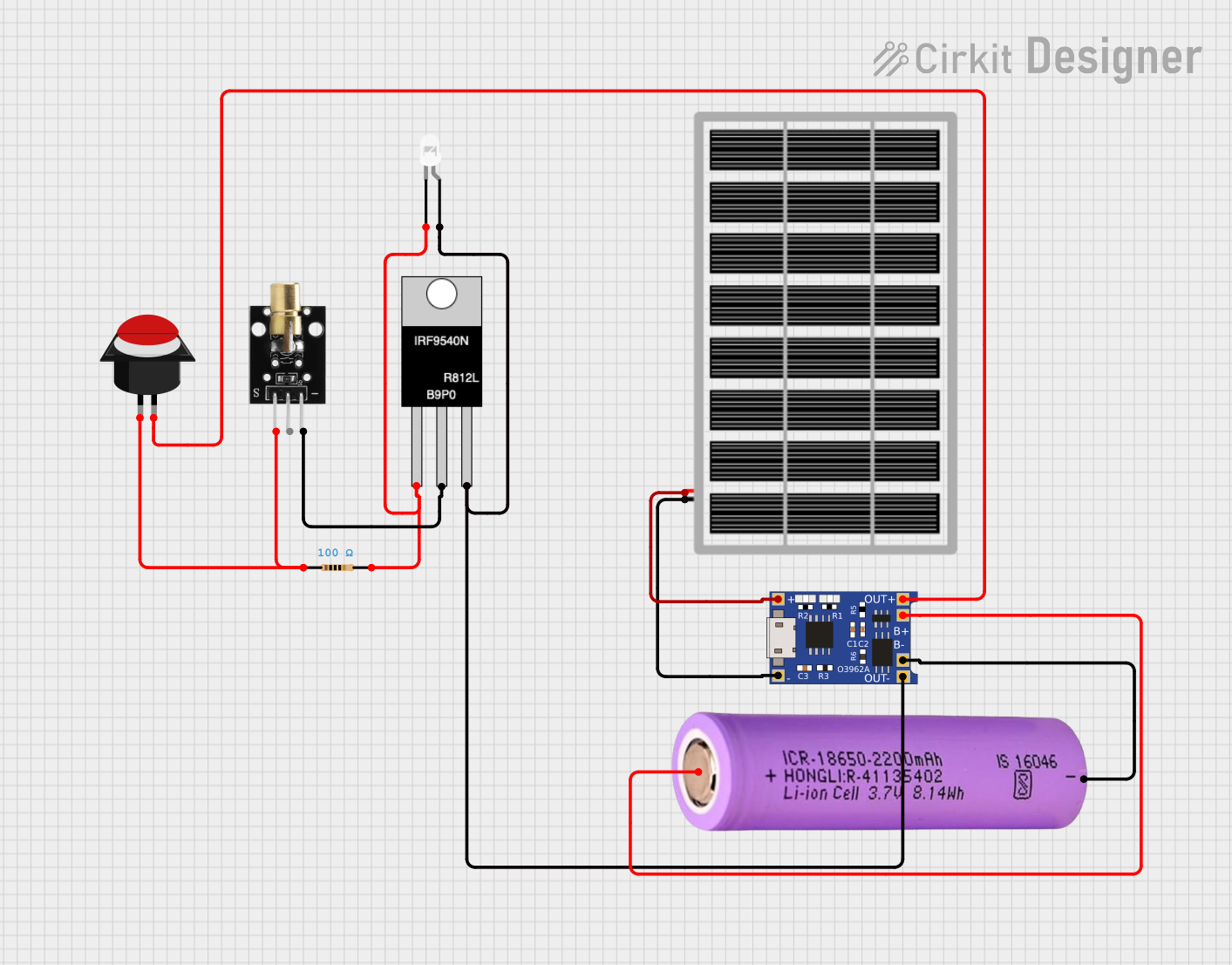
 Open Project in Cirkit Designer
Open Project in Cirkit Designer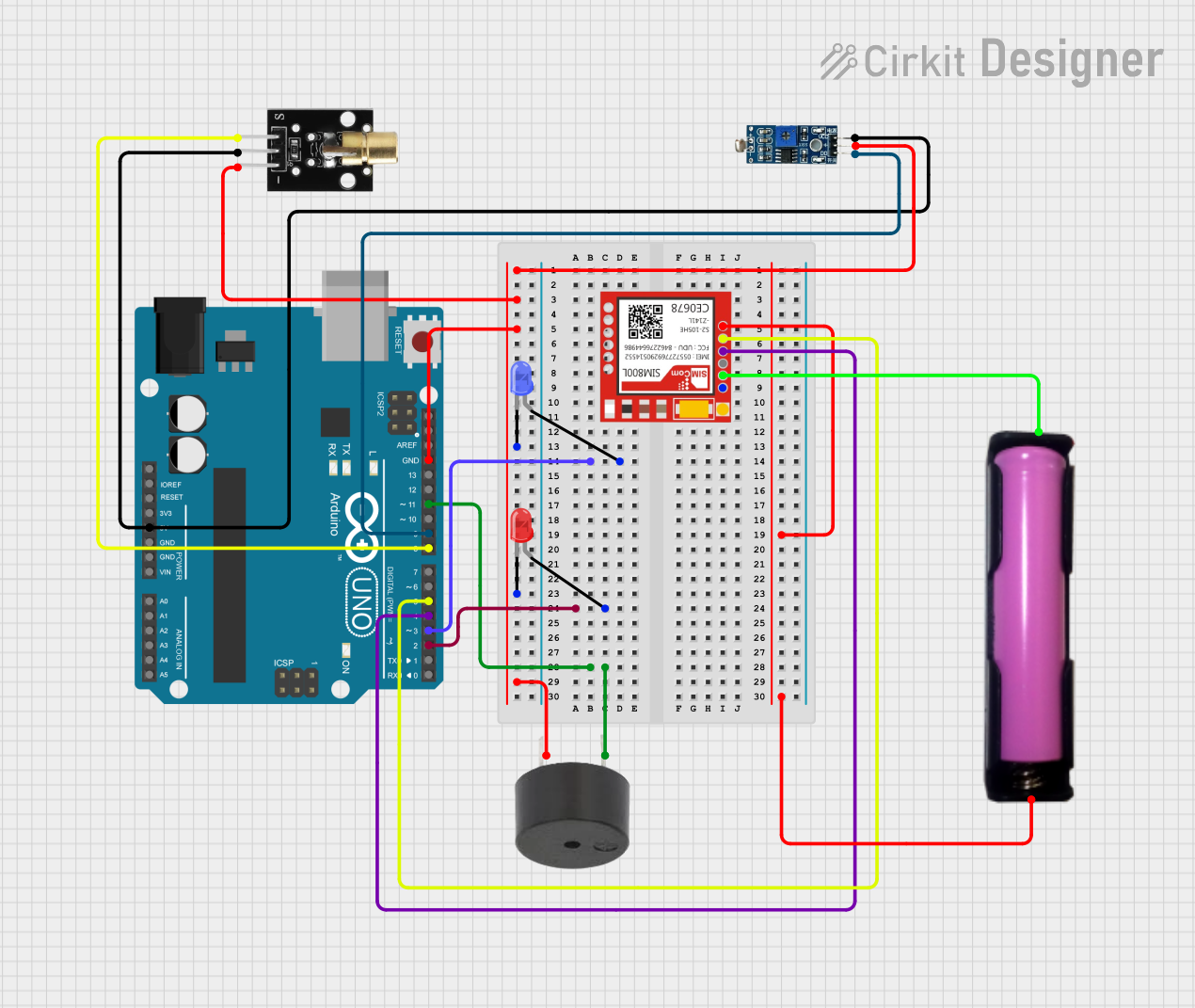
 Open Project in Cirkit Designer
Open Project in Cirkit Designer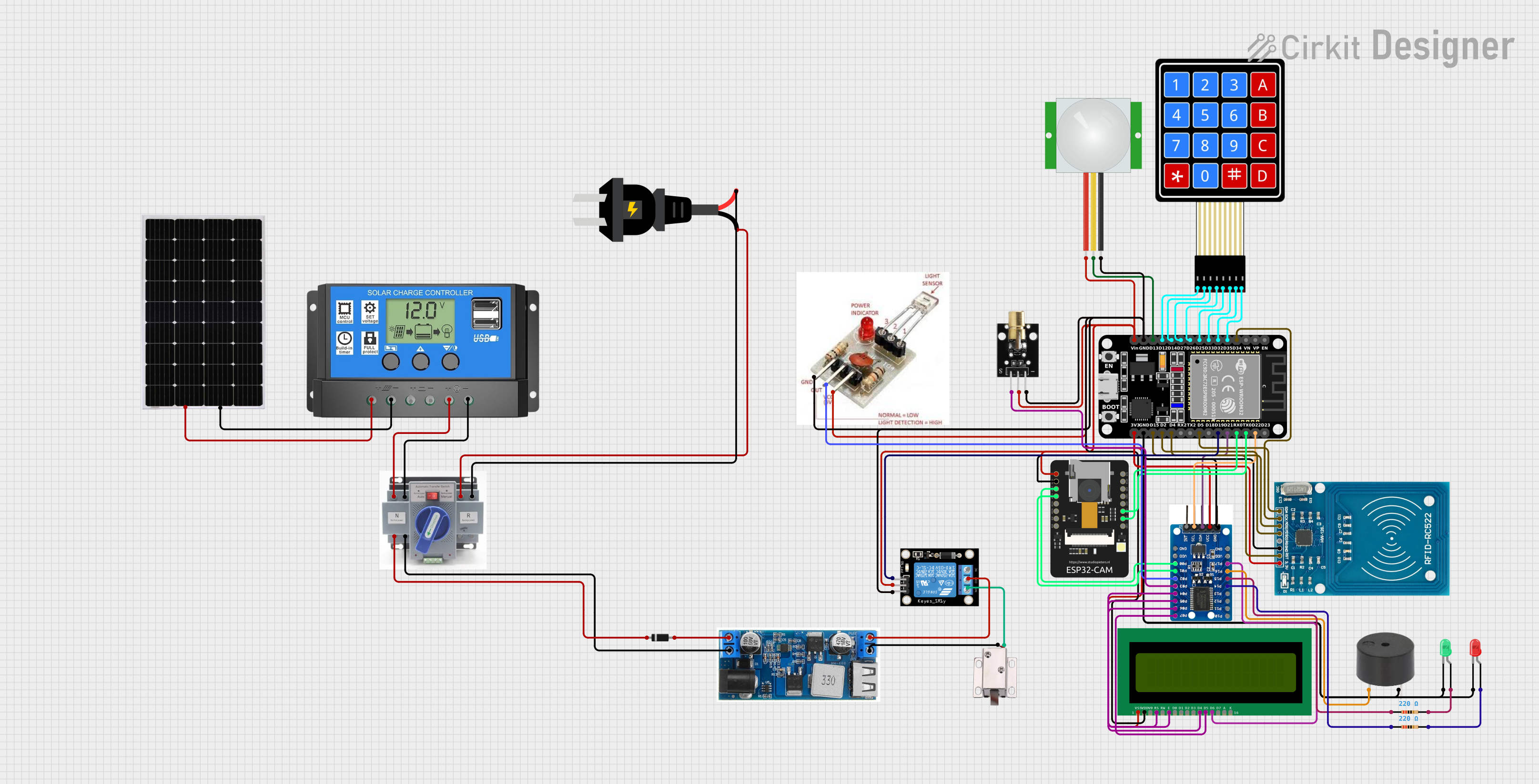
 Open Project in Cirkit Designer
Open Project in Cirkit DesignerExplore Projects Built with laser module

 Open Project in Cirkit Designer
Open Project in Cirkit Designer
 Open Project in Cirkit Designer
Open Project in Cirkit Designer
 Open Project in Cirkit Designer
Open Project in Cirkit Designer
 Open Project in Cirkit Designer
Open Project in Cirkit DesignerTechnical Specifications
Below are the general technical specifications for a standard laser module. Note that specific models may vary, so always refer to the datasheet of your particular module.
General Specifications
- Wavelength: 650 nm (red), 532 nm (green), or other depending on the module
- Output Power: 1 mW to 100 mW (varies by model)
- Operating Voltage: 3V to 5V DC
- Operating Current: 20 mA to 200 mA
- Beam Divergence: < 1.5 mrad
- Focus: Adjustable (on some models)
- Operating Temperature: -10°C to 50°C
Pin Configuration
The laser module typically has three pins or wires for connection. Below is a table describing the pin configuration:
| Pin/Wire | Description | Notes |
|---|---|---|
| VCC | Positive Power Supply | Connect to 3V-5V DC power source |
| GND | Ground | Connect to the ground of the circuit |
| TTL/Control | Modulation Input (Optional) | Used for enabling/disabling the laser or PWM control |
Note: Some laser modules may only have two wires (VCC and GND) without a TTL/Control pin.
Usage Instructions
How to Use the Laser Module in a Circuit
- Power Supply: Connect the VCC pin to a 3V-5V DC power source and the GND pin to the ground of your circuit.
- Control Signal (if available): If the module has a TTL/Control pin, you can use it to turn the laser on/off or modulate the beam using a PWM signal.
- Mounting: Secure the laser module in a stable position to ensure accurate beam alignment.
- Focusing: If the module has an adjustable focus, rotate the lens to achieve the desired beam sharpness.
Important Considerations and Best Practices
- Safety First: Always avoid direct eye exposure to the laser beam. Use appropriate laser safety goggles if necessary.
- Current Limiting: Ensure the power supply provides the correct voltage and current to avoid damaging the laser diode.
- Heat Management: For high-power modules, consider adding a heatsink or cooling mechanism to prevent overheating.
- Modulation: Use the TTL/Control pin for precise control of the laser beam, such as turning it on/off or dimming it via PWM.
Example: Connecting a Laser Module to an Arduino UNO
Below is an example of how to connect and control a laser module using an Arduino UNO:
Circuit Diagram
- Connect the VCC pin of the laser module to the 5V pin on the Arduino.
- Connect the GND pin of the laser module to the GND pin on the Arduino.
- If the module has a TTL/Control pin, connect it to a digital pin on the Arduino (e.g., pin 9).
Arduino Code
// Laser Module Control with Arduino UNO
// This code turns the laser module on and off at 1-second intervals.
const int laserPin = 9; // Pin connected to the TTL/Control pin of the laser module
void setup() {
pinMode(laserPin, OUTPUT); // Set the laser pin as an output
}
void loop() {
digitalWrite(laserPin, HIGH); // Turn the laser on
delay(1000); // Wait for 1 second
digitalWrite(laserPin, LOW); // Turn the laser off
delay(1000); // Wait for 1 second
}
Note: If your laser module does not have a TTL/Control pin, it will turn on as soon as power is applied to the VCC and GND pins.
Troubleshooting and FAQs
Common Issues and Solutions
Laser Does Not Turn On
- Cause: Insufficient power supply or incorrect wiring.
- Solution: Verify that the power supply provides the correct voltage and current. Double-check the wiring connections.
Beam is Dim or Unstable
- Cause: Low input voltage or overheating.
- Solution: Ensure the power supply is stable and within the specified range. Add a heatsink if necessary.
Laser Module Overheats
- Cause: Prolonged use or insufficient cooling.
- Solution: Limit the operating time or add a cooling mechanism such as a heatsink or fan.
No Response to TTL/Control Signal
- Cause: Incorrect signal level or damaged control pin.
- Solution: Verify that the control signal is within the specified voltage range (typically 0V for LOW and 5V for HIGH).
FAQs
Q: Can I power the laser module directly from a 9V battery?
A: No, most laser modules are designed for 3V-5V operation. Using a 9V battery without a voltage regulator may damage the module.Q: Is it safe to use the laser module without protective goggles?
A: No, even low-power lasers can cause eye damage. Always use appropriate laser safety goggles.Q: Can I use the laser module outdoors?
A: Yes, but ensure the module is protected from moisture and extreme temperatures.Q: How do I adjust the focus of the laser beam?
A: Rotate the lens on the front of the module (if adjustable) to achieve the desired focus.
By following this documentation, you can safely and effectively use a laser module in your projects. Always prioritize safety and consult the module's datasheet for specific details.